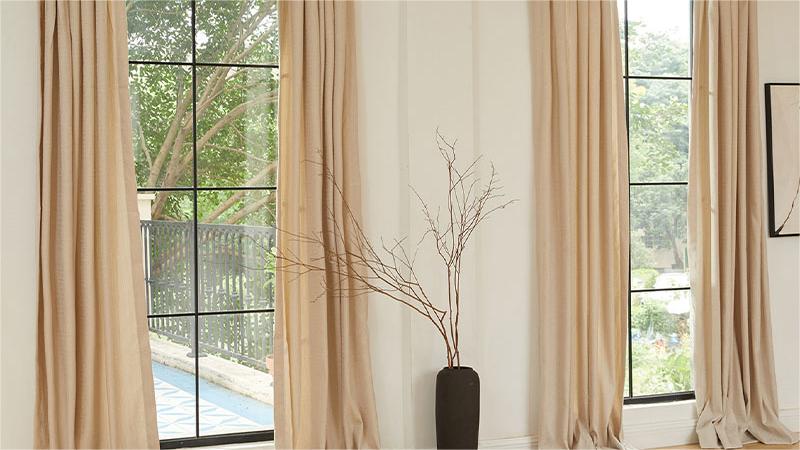The application of the curtain is supplementary to the windows as they provide style and efficiency to the said windows. Compared to the conventional types of curtains, one has the option of getting those that are specifically designed to meet the specific requirements as well as offer that perfect touch to the area. However, they may sometimes pose a great dilemma as far as the size of the custom curtains is concerned. Here is a detailed guide to help you know different drape sizes and how to get the right size that fits you.
Understanding Curtain Sizes
Usually, the size of custom curtains is not only the height and width but also several other factors that concern the appearance and functionality of the curtains. Here’s a breakdown of what to consider:
Width
The width of your curtain is determined by the width of your window and an extra space outside the width of the windows if necessary. This ranges between five and three times the width of the window depending on the style as well as the size of the window. This allows the garment to have a correct fullness, and the drape feels rather luxurious.
Standard Width: When it comes to standard windows, it is expected that custom curtains are made with the width being 1:1. In detail, it is advised that this element should be between 1 to 2 times the size of the respective window. It offers a light gather or look when the curtains are drawn to a close.
Extra Fullness: If you desire to make your windows appear more luxurious, then you have to select your curtains at least two to three times the width of the window. This is because the heavier part will make the pleats or folds deeper to get the required dramatic touch.
Length
The length of the curtains determines how they drape and their interaction with the floor or sill if there is any. There are several length options:
Sill Length: These curtains touch the windowsill or are slightly above the sill, maybe an inch or two. These are ideal for the kitchen or any other area where curtains pose an inconvenience to the users.
Apron Length: These curtains are not pulled to the floor but close to it and also not fully to the sill; they only touch the sill a little. It can be said that it is more appropriate for a casual modern setting.
Floor Length: These curtains touch the floor level thus providing a formal and magnificent look of the window. This should almost or slightly touch the floor so that the curtains do not sweep on the floor when passing through.
Puddle Length: Blinds are also used in a manner that they gently kiss the floor to create an impression of drama and the aspect of luxury. This length demands more fabric and therefore the curtains are lavish and fluffy on the floor.
Measuring for Custom Curtains
The fit of the curtains should be perfect; therefore, the measurements must be well taken. Follow these steps to get the right dimensions:
Measure the Width
For the width, using a measuring tape, it is necessary to determine the width of the window including additional width beyond the width of the frame in case you are going to have the curtains to the width of the wall. To be certain, the window should be measured at its top, at the middle, and at the bottom and the largest shall be the measurement that should be considered.
Measure the Height
In measurement of width, the measuring will be done starting from the middle of the curtain rod and will be followed to the length which may include sill length, apron length, floor length, or puddle length. When measuring for the floor-length curtains ensure that the tape measure is placed correctly and horizontally to get a correct measurement.
Install the Curtain Rods
Curtain rods also have their relevance and the positioning of the rods in this case is regarding the looks. Typically, the rod is positioned 4-6 inches above the window frame. If you want to have a more noticeable style, then you can align the rod closer to the ceiling.
Choosing the Right Fabric
The kind of fabric that you are going to use in your curtain defines the design and operation of the curtain. Velvet or brocade are suitable for somewhat more formal-looking rooms, and they are rather good at insulating too. Cotton or linen fabrics are more suitable for work attire and seem to have a more air-preferred texture to them.
Conclusion
The process of choosing the right size of the custom curtains entails understanding some measures and how they affect the space and look of the room as well as its functionality. Hence, by reading the dimensions of one’s windows, identifying the right width and length, and deciding on the kind of heading and material for curtains, one will be in a good position to sew nice and quality curtains that will enhance the home. Again, made-to-measure curtains allow one to achieve a nice, neat fit and bring in that extra element of elegance and personalization to one’s house.


